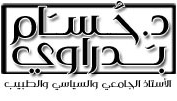Technical education and vocational training
Written by
Dr. Hossam Badrawy
Technical education and vocational training accommodates more than half of the students who enroll in secondary school after middle school, representing a majority of young people. Given that the Egyptian economy seeks to reach growth rates of more than 6% annually in a sustainable manner for at least ten years, the job opportunities that are available and will be available in the future are great. This development cannot be sustained without high-level technical labor and effective regulation of the professions required by this development. Indeed, the regional and global labor market, especially in the northern Mediterranean, will need labor from outside its geographical scope, which will open greater opportunities for Egyptian youth if It was well prepared to fill the jobs needed by this market, which would increase their and the state’s resources, reduce unemployment, and achieve economic and humanitarian gain for citizens.
Technical education, like any old educational system, is exposed to many challenges, and it also contains strengths and opportunities for development.
The most important challenges of this type of education are the absence of an integrated vision for it, and the low budgets allocated for development needs and ambitions. It suffers, like other education sectors, from the philosophy of distributing and directing students on the basis of the total grades in the basic education completion certificate, while internal coordination takes place. For the school according to the capacity of the department and the number of teachers in the specializations and also according to the grades, without taking into account the needs of the labor market or the inclinations and readiness of the students.
Reality confirms, for example, the high unemployment rate for graduates of technical schools, especially commercial ones, in which the enrollment rate rises to about 34% of the total number of people enrolled in technical education, most of whom are girls. It is as if it were a garage created by the education system not with the aim of acquiring skills and increasing knowledge, but rather to spend… Time in this vital age stage is of no use to the youth and society
It is surprising that there is no demand for agricultural education in Egypt, which has an influential agricultural history in the world. The demand for vocational education in this sector coincides with a low social view of this type of education, and it and its graduates are considered to be of a lower social rank.
All of these things were generated and expanded in the absence of a dream and a lack of vision, which narrowed to have a limited goal of assimilating the youth, regardless of the feasibility in educational institutions that do not teach, and skills that are not acquired, within a political framework that claims success simply for the sake of assimilation.
Are these challenges that we created ourselves capable of being modernized? I believe that it is possible to overcome them, but rather to launch technical education and vocational training with a vision that is integrated with general education and intertwined with the vision and dream of reform and development in Egypt. But how? This is the question.
The policies proposed to promote and develop technical education and vocational training must be an integral part of the human development strategy that we must pursue, and since distinct and scattered efforts have been applied in this field over the past years, a comprehensive overview of the development efforts will be given. It has greater value and achieves the desired development
The proposed policies for developing technical education and vocational training are divided into six packages of policies, which we present as follows:
First: Policies for general education related to technical education:
The student in this system still has to obtain general knowledge, language skills, use of computers, and study materials that deepen his national affiliation and form his identity and connection to society. As for higher education, it has an important parallel role, which is the graduation of teachers and trainers for these institutions, as well as the expansion of technical and technological education institutes as part of the higher education system, which will lead to two influential results, the first of which is: the compatibility of higher technical education with the requirements of some professions, and the other result: It appears in the societal impact of merging technical education and higher education in raising the value of this type of education according to society’s customs and the real need for it, provided that this is in the presence of a national qualifications framework in Egypt (we have been seeking to approve it for twenty years!!)… Therefore, This type of education must have flexibility in the curriculum, which must keep pace with the type of professions associated with the number of years of study, which must not be limited to two, three, or four years, but rather with educational packages, merit grades, and skill proficiency taught on the credit hour system.
Second: Policies for developing the umbrella responsible for this type of education:
The umbrella now is essentially the Ministry of Education, the Ministry of Higher Education, and specific ministries such as industry, agriculture, tourism, manpower, housing, etc., which may supervise some training centers and their programmes, but in an incoherent manner, and without a coherent comprehensive vision, which may scatter efforts. And distracts her. We witnessed the creation and elimination of a ministry responsible for technical education without analysis. Why was it created and why was it abolished?!
Third: Policies for implementing quality assurance and accreditation systems:
For all programs related to technical education and vocational training and its institutions, any service must have standards, and any service must be evaluated based on the indicators of these standards. There is no doubt that the general education standards that must be approved by the Quality Assurance and Accreditation Authority in Education differ from the technical skills “industrial, agricultural, or in other professions,” which must be approved and teaching and training evaluated for them by neutral evaluation bodies. This is the philosophy that I consider it obligatory in technical education
We must differentiate between accrediting the educational or training program proposed by the specific councils for each group of professions, and accrediting the educational or training institution that teaches or trains this curriculum… both of which are required, and these are new relationships for the technical education community. One of the Ministry’s most important achievements is the establishment of a new independent body for quality assurance and accreditation in technical, technical, and vocational education (ETQAAN) with support from all major development partners (USAID, GIZ EU) in 2022.
Fourth: Policies for developing and enhancing the performance of working human cadres:
Whether in schools or training institutions and centers, this is done by establishing a system of material and in-kind incentives for all members of the technical and vocational education community, and holding study programs with international institutes to provide joint curricula in which technical education students from inside and outside Egypt participate, and sending scholarships and creating Partnerships with the private sector We commend the Ministry of Education and Technical Education for including the Technical Education Teachers Academy (TVETA) within the new organizational structure of the Ministry, and also introducing a new sectoral concept represented by the sectoral centers of excellence (Centers of Competence), where it began Applying this concept with KFW and the European Union in the new and renewable energy sector and with GIZ in the engineering and automotive industries sectors. It is worth noting that the Ministry, since 2018, has presented a new model for education, namely applied technology schools, in partnership with leading private sector companies and international institutions to ensure Quality. We started with three schools and now we have more than 41 schools, including 6 new schools with an advanced concept under the name International Schools of Applied Technology.
Fifth: Policies to change society’s view of technical education:
This comes through media interest in technical education, highlighting the capabilities, fields, and prestigious job opportunities for its graduates, and appreciating the first and most distinguished among them. Likewise, adding technological education to the name of technical education and its content (technical and technological education and vocational training) may be a factor in changing society’s impressions about This education is more positive
Sixth: Policies for practicing various professions:
This is done by determining the levels of technical competence for each profession, licensing and re-licensing, and partnering with the private sector in this, so that the names of professions are unified at the national level, their descriptions and skills are determined, and appropriate and unified programs are developed to obtain those skills, and the setting of their tests and the granting of certificates. Knowing that there are serious steps taken by the Ministry in this regard, represented by developing competency-based curricula, which are characterized by their sensitivity and clear connection with the labor market, as the methodology begins with sessions with representatives of the labor market to agree on the qualifications specifications of the graduate, leading to the student’s acquisition of The skills, knowledge and behaviors that the labor market needs today, and since 2018 the Ministry of Education and Technical Education has thankfully developed 86 curricula according to the competency methodology out of a total of 125 curricula and reviewed them by labor market representatives, as well as involving labor market representatives in practical examinations for education students. Technical level, granting the student a diploma with another certificate indicating the competencies he has mastered, and also creating 29 new programs and curricula to respond to the needs of the labor market.
Professional merit scores for each profession must be visible and agreed upon between countries. Perhaps the European Union and the respectable efforts it has made in this field have united European countries, facilitating the movement of professionals and teachers across borders between one country and another. My call was – and still is – for us to adopt these standards and this method, so that our professional youth will have access to… A broader labor market than Egypt in the Arab countries and the northern Mediterranean. If the technical education and vocational training systems are compatible with European systems, this will be a positive factor in creating good job opportunities there without the need for illegal presence or accepting low salaries due to a low professional level and the absence of a license. This is linked to the recognized degrees of professional competence. In line with this, the Ministry of Education is conducting an international survey of the needs of the labor market in Europe and the Gulf countries for Egyptian workers and determining the necessary skills and qualifications with the aim of developing programs to meet these needs. This initiative is funded by the European Bank. For Reconstruction and Development (EBRD)..
The opportunity is available. Rather, I see it calling and striving for us, and the time has come for us to take the initiative. It does not require a new genius, but rather it requires political will and sustainable application.

 Dr. Hossam Badrawi Official Website
Dr. Hossam Badrawi Official Website

